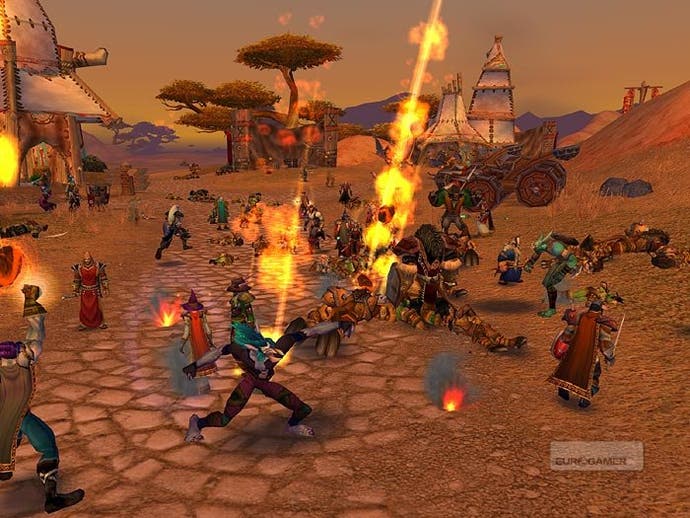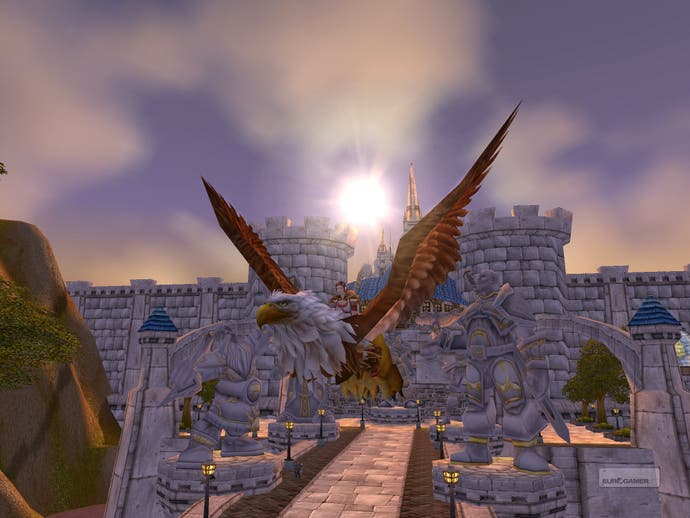The Making of World of Warcraft
Part One: From concept to launch.
"That was contentious right up until the time we launched," he recalls. "The team was pretty divided on that. Jeff Kaplan was pretty against it - he would ask what the point was in splitting up the player-base. People are going to want to play with, well, the people they want to play with!
"Allen Adham, who was the original lead designer, was very adamant that the split was going ahead, because we needed to break the game into teams. If we wanted to have a PvP game, we would want it to be team-based - in a lot of ways, it was like Dark Age of Camelot had done. I was on board with the idea, because I felt like that was one of the advantages that DAOC had over Ultima Online, which I'd worked on.
"DAOC had pre-determined teams, you were either Albion or Hibernia or, er, the other one. Players were split into those teams, and they felt like they were a part of something. It automatically meant that you had people who were friendly to you and willing to help you, who you could join up with - and you know who the bad guys were. In Ultima Online, while not having those boundaries was interesting, it was a huge hurdle for players. People didn't feel like part of anything - they didn't know who their friends were, who they were supposed to be fighting against, what they were supposed to do.
"It was very cool for really hardcore players who could organise themselves into guilds and essentially create their own teams, but it was very intimidating for new players. The split was the right thing to do for WOW, in a spirit of wanting accessible PvP that felt like Warcraft. Eventually Jeff Kaplan came around to the idea - within the last year or so - but right up to launch, there were still people on the team that were opposed to the concept."

As the launch date for the game approached, the team knew that some sacrifices were going to have to be made in order to get WOW into players' hands. "We had discussions," Metzen remembers, "about whether, if we wanted to get this thing out before we all had grandchildren, we would have to pull back, or scale back conceptually."
Scaling back on the game's ideas wouldn't have fit with the Blizzard way. Instead, some areas were pushed back to be dealt with after release. One of those was PvP - which, when the game launched, was much more rudimentary than the team had planned.
"Everyone on the team wanted PvP in the game," says Chilton, "but we just had this nebulous idea of what it was going to be. We knew that the general philosophy was that we wanted it to be Warcraft III meets Battlefield 1942. A Battlefield perspective, and an action sort of feel, with the epic warfare of Warcraft III - and that was it. That was all we knew. The team was behind the vision, it was just a question of how to accomplish that vision.
"We hadn't really resolved that by the time we launched World of Warcraft. All we had when the game launched was the ability for people to flag themselves as PvP and then fight it out for the sake of fighting it out - then we had PvP servers where people were automatically flagged in the contested territories. That's all we had time to implement by the time we launched."

As the launch date approached, Chilton wondered to himself what kind of subscriber numbers the game would do. "I did feel that we had the best MMO out and that we would do better than other games - I thought that 750,000 to a million, something like that, would have been the upper boundary of what an MMO could achieve. Others anticipated more than that, but..."
They would soon find out if their predictions - and their years of hard work - would be worth anything. World of Warcraft's North American launch date was set: November 23rd, 2004. From that date, for Blizzard, everything would change.
In Part Two: the aftermath of the launch, managing the success of the game, and the lessons learned from WOW's early years and expansion packs.
